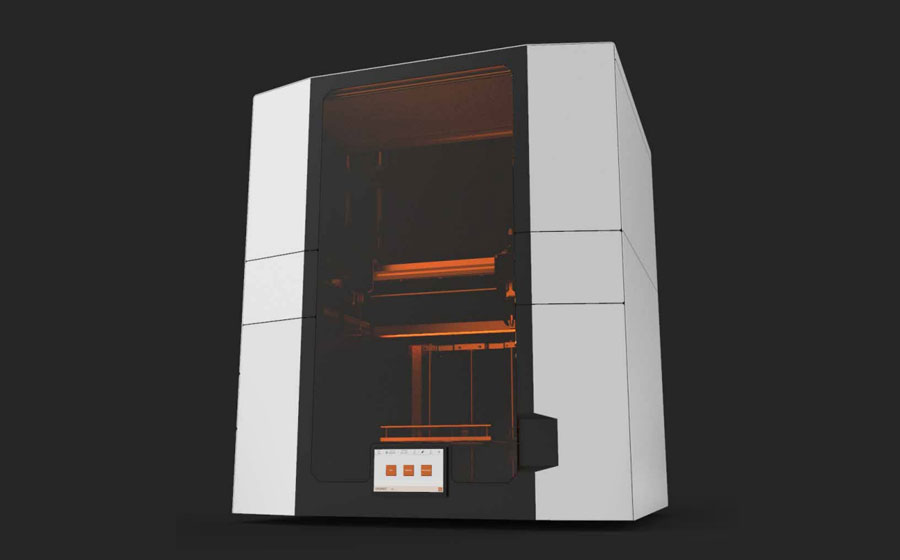Constructing a multifunctional hybrid 3D printer with real-time quality control system

Project summary
The main objective of the project is to develop a prototype of a SYGPAST hybrid 3D printer enabling real-time control of the manufacturing process. The device will enable printing from liquid materials and thermoplastic filaments in a single process and provide the user with open access to modify the printing parameters, thus allowing the use of proprietary materials. The SYGPAST printer will find applications in the space industry (demanding components of satellites), aerospace (small turbine tooling), power engineering (specialized seals), chemical and materials industry (both for validation of manufactured materials and production of specialized accessories assisting in research), and wherever the maintenance of continuous operation of machines and their parts requires their efficient adaptation to regularly changing operating conditions (rearming of machine lines by manufacturing specialized adapters, holders and safety devices).
Project Result: Sygpast 3D printing technology
Thanks to the versatility of the Sygpast printer, we can obtain spatial objects with geometries that increase battery capacities, among other things, or allow the creation of multi-cell batteries with good sub-insulators between each section. A favorable event for the success of the project is that Sygnis has joined the CePT II consortium (which includes UW, WUM, Unipress, PW, IBB and others), within which the Cell Prototyping Laboratory is also being established. Interest in machines that enable research prototyping and subsequent manufacturing of target energy storage products has been confirmed by a letter of intent from the University of Warsaw, among others. The development of energy storage capabilities is key to achieving EU climate indicators. Battery research and development is one of humanity’s key issues in the coming decades, and Sygpast is an ideal vehicle for this, and in subsequent development iterations also for production processes. Also in this project, we are interested in participating in the development of electrochemical cells, where changing material mixtures (conductive carriers) and insulators of individual sections (non-conductive carriers) will be used. The space industry requires materials with a particular fit of components due to the extreme loads they are subjected to (temperature, radiation, among others), as well as utility versus mass (it is essential that lifted-off components achieve the maximum ratio: utility – mass). Hence, among other things, according to DARP specialists, next-generation spacecraft will largely use 3D printed ceramics in their construction. Also, representatives of the Polish space sector identify dedicated ceramics of any shape as among the most essential for the development of Polish satellites. One of the key competitive advantages of the Sygpast printer is its control system, which ensures manufacturing stability, as well as the ability to report errors and deviations (quality control), a prelude to quality certification capabilities. Sygpast is also a unique device that allows research and development activities in the scientific sector. Research teams are struggling to access machines with open parametric systems to check the performance of materials and admixtures in final molds. In the field of industrial machinery, there are advanced solutions for specific materials, however, they do not allow for free research and testing under controlled conditions of new materials. Sygnis customers from the Departments of Materials at PW, AGH, PWr, Nanomaterials Engineering, Institute of High Pressures of the Polish Academy of Sciences, CMPW PAN Zabrze, IEN, UAM and others are extremely interested in the possibilities of testing new flexible, silicon materials, as well as doped nanomaterials. The final result of the project is a 3D printing technology with a system for real-time control (and real-time compensation) of printing parameters and a machine in its first iteration using the developed technology – SYGPAST.
Market size
Creation of spatial structures from two-component materials with set parameters for industry (including polyurethanes)
Creation of spatial structures from ceramic materials freely doped (depending on the application) for industry
Application in the development of specialized materials in research groups (research gate machine)
A. Industrial standardization requires fully repeatable processes and control of conditions. Sygpast, thanks to its internal control with compensation and execution report, provides a controlled manufacturing process with 3D printing. As a result, it can become part of production lines in demanding industries such as automotive and aerospace. These can include gaskets with unusual geometries, specialty shoes, insulators for sensitive space electronics.
B. Processes for creating ceramic, or preceramic, objects are currently complex and costly. They are also essential for the creation of energy, radioactive and temperature insulators. Demand for such products is growing worldwide, including in the rapidly expanding space or energy industry. Sygpast enables the creation of qualitatively new satellites (better matching of free-form insulators), or non-conductive carrier components of energy storage systems, among others. Technologies for manufacturing ceramic objects with unusual geometries by means of 3D printing are sometimes the only option, and are about 20% cheaper when compared with traditional methods. This is an added advantage in terms of market entry.
C. During the “Future of Materials” lecture at the Formnext conference, it was reported that nearly 1,000 research teams are currently working on the development of resin, ceramic and other liquid materials in Europe alone. We will enable them to test new solutions in a manner analogous to how Cellink has made the BioX research-gate machine available to biotech teams (Cellink’s increase in value in 4 years is over 900%). The analogies we have to this development path are that we are creating a machine that democratizes the testing of difficult materials (relatively low price of the solution) and that we have our own carrier substances (completed Innovation Voucher with universal ceramic carrier).
D. Development of energy storage, among others, according to Bloomberg New Energy Finance (BNEF), by 2050, 50% of the world’s production will come from renewable energy sources (40% increase from 2019). Research work on batteries and energy storage is one of humanity’s key issues in the coming decades, and Sygpast is an ideal tool for this work (in future iterations also for production). Energy storage facilities are key to achieving the energy transition.
E. The target markets for the solution under development have a total value of $50 billion to $80 billion (depending on estimates of the development of each branch).
Current value of the project
In the field of non-conductive carriers, we have completed the PARP Innovation Voucher project (project value of about PLN 500 thousand). We implemented it jointly with the The Institute of Power Engineering (IEn), and the results of the research work were attached to the Sygpast project. The developed carrier wets a wide range of ceramic powders well, which allows universal application with various materials. Research work worth PLN 7,670 thousand (carried out in a consortium of Sygnis SA [leader] and Poznan Supercomputing and Networking Center). The project was selected for funding by the National Research and Development Center, project number: POIR.01.01.01-00-0438/20, funding value PLN 6,206,000. The agreement between Sygnis SA and the Poznan Supercomputing and Networking Center provides for exclusive licensing use of the machine’s software.


